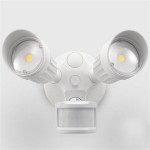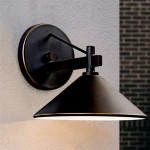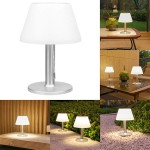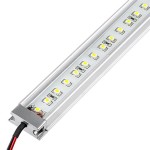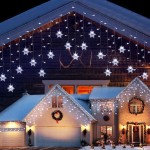The Definitive Guide to Selecting the Best Outdoor Security Lighting System
Outdoor security lighting plays a crucial role in deterring crime and enhancing the safety of residential and commercial properties. A well-designed system illuminates vulnerable areas, making it difficult for intruders to approach unseen and providing valuable visibility for security cameras and occupants. The market offers a wide array of options, from basic motion-activated lights to sophisticated, integrated systems with smart features. Choosing the "best" system necessitates a thorough understanding of individual needs, property layout, budget, and desired functionality. This article provides a comprehensive guide to evaluating and selecting the optimal outdoor security lighting system for any property.
Before diving into specific products, it is essential to identify the key factors that influence the effectiveness of outdoor security lighting. These factors include light intensity, coverage area, sensor technology, power source, and integration capabilities. Each of these elements contributes to the overall performance and suitability of a particular system.
Understanding Key Factors in Outdoor Security Lighting
The effectiveness of any outdoor security lighting system hinges on several key factors, which should be carefully considered during the selection process. These factors encompass the practical aspects of illumination, technological sophistication, and long-term operational efficiency.
Light Intensity and Coverage Area
Light intensity, measured in lumens, dictates the brightness of the light emitted. A higher lumen output generally provides better visibility and deters potential intruders more effectively. However, excessive brightness can be disruptive to neighbors and create glare, reducing the effectiveness of security cameras. A balanced approach is crucial. Coverage area refers to the extent of the area illuminated by the light. This depends on the light's beam angle and mounting height. Wider areas require lights with a broader beam angle or multiple light sources strategically positioned to eliminate shadows and blind spots. Consider the size of the property, vulnerable access points, and the desired level of overall illumination when determining ideal light intensity and coverage.
Sensor Technology and Activation Methods
Sensor technology determines how the lights are activated. Motion sensors are the most common type, using infrared or microwave technology to detect movement within a specific range. Infrared sensors detect changes in heat signatures, while microwave sensors emit radio waves and detect disturbances in their reflection. Microwave sensors are generally more sensitive and less prone to false alarms caused by foliage or small animals, but they may also be more expensive. Alternative activation methods include dusk-to-dawn sensors, which automatically turn lights on at sunset and off at sunrise, and manual operation, allowing for complete control over lighting schedules. Combining different activation methods can provide enhanced security and flexibility.
Power Source and Energy Efficiency
The power source determines how the lights are powered. Options include hardwired connections to the electrical grid, battery power, and solar power. Hardwired lights offer a reliable and continuous power supply but require professional installation. Battery-powered lights are easier to install but require periodic battery replacement. Solar-powered lights are environmentally friendly and cost-effective in the long run but rely on sunlight and may not perform optimally in shaded areas or during extended periods of cloud cover. Energy efficiency is also a crucial consideration. Look for LED lights, which consume significantly less energy than traditional incandescent or halogen bulbs while providing comparable or superior brightness. This reduces electricity bills and minimizes the environmental impact.
Types of Outdoor Security Lighting Systems
The market offers a diverse range of outdoor security lighting systems, each with its own advantages and disadvantages. Understanding the different types available is essential for making an informed decision.
Motion-Activated Floodlights
Motion-activated floodlights are a staple of outdoor security lighting. These lights typically consist of a high-intensity light source (often LED) coupled with a motion sensor. When motion is detected within the sensor's range, the light automatically turns on, startling potential intruders and illuminating the area. Motion-activated floodlights are relatively inexpensive, easy to install (particularly battery-powered models), and effective at deterring crime. Consider adjustable sensitivity settings to minimize false alarms caused by small animals or weather conditions. Beam angle and coverage area should be optimized for the specific area being secured.
Dusk-to-Dawn Lights
Dusk-to-dawn lights provide continuous illumination from sunset to sunrise. These lights are ideal for areas that require constant visibility, such as walkways, driveways, and building entrances. Dusk-to-dawn lights typically use photocells to detect ambient light levels and automatically turn on and off accordingly. While they provide consistent lighting, they consume more energy than motion-activated lights. LED models offer significantly improved energy efficiency compared to traditional incandescent or halogen options. Consider the color temperature of the light, as a warmer color temperature (e.g., 2700K-3000K) is generally considered more pleasing and less harsh than a cooler color temperature (e.g., 5000K-6000K).
Smart Security Lights
Smart security lights offer advanced features and integration capabilities. These lights can be controlled remotely via a smartphone app, allowing users to adjust brightness, set schedules, and receive notifications when motion is detected. Many smart security lights also integrate with other smart home devices, such as security cameras and alarm systems, creating a comprehensive security ecosystem. Some models even include built-in cameras and speakers, allowing for two-way communication with visitors or potential intruders. While smart security lights offer a high level of convenience and control, they are typically more expensive than traditional options and require a stable Wi-Fi connection.
Installation Considerations for Optimal Performance
Proper installation is crucial for maximizing the effectiveness of any outdoor security lighting system. Careful planning is required to ensure adequate coverage, minimize glare, and avoid obstructions.
Placement and Positioning
Strategic placement is paramount. Lights should be positioned to illuminate vulnerable areas, such as entry points, walkways, and dark corners. Avoid positioning lights directly facing windows, as this can create glare and disrupt sleep. Consider the height and angle of the lights to maximize coverage and minimize shadows. Motion sensors should be positioned to detect movement from the intended direction of approach. For example, a motion sensor positioned near a driveway should be aimed towards the street to detect approaching vehicles.
Wiring and Electrical Connections
Hardwired lights require proper wiring and electrical connections. If you are not comfortable working with electricity, it is best to hire a qualified electrician. Ensure that all wiring complies with local electrical codes. Use weatherproof connectors and conduit to protect wiring from the elements. Consider installing a dedicated circuit for outdoor lighting to prevent overloading existing circuits. Ground fault circuit interrupters (GFCIs) are essential for outdoor electrical outlets to protect against electric shock.
Maintenance and Longevity
Regular maintenance is essential for ensuring the longevity and optimal performance of outdoor security lighting systems. Clean the lenses of the lights periodically to remove dirt and debris that can reduce brightness. Check for loose connections or damaged wiring. Replace batteries in battery-powered lights as needed. For solar-powered lights, clean the solar panels regularly to maximize energy absorption. Inspect the fixtures for signs of corrosion or damage and replace them as necessary. Choose durable, weather-resistant materials that can withstand the elements.

The Best Outdoor Security Lights Safewise

The 5 Best Outdoor Security S Of 2024 Reviews By Wirecutter

Best Outdoor Security Lights With S Of 2024 Forbes Home

5 Security Lighting Tips For An Effective And Beautiful Landscape System Limelight Outdoor

The Best Outdoor Security Flood Lights Of 2024 Philips Ring And More Compared Zdnet

The Best Outdoor Security Flood Lights Of 2024 Philips Ring And More Compared Zdnet

The Best Outdoor Security Flood Lights Of 2024 Philips Ring And More Compared Zdnet

The 5 Best Outdoor Security S Of 2024 Reviews By Wirecutter

7 Best Outdoor Motion Sensor Lights Of 2024 Tested And Reviewed By Bob Vila

Ring Floodlight Cam Wired Plus Outdoor Flood Light Security

